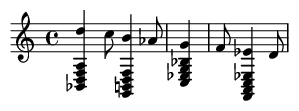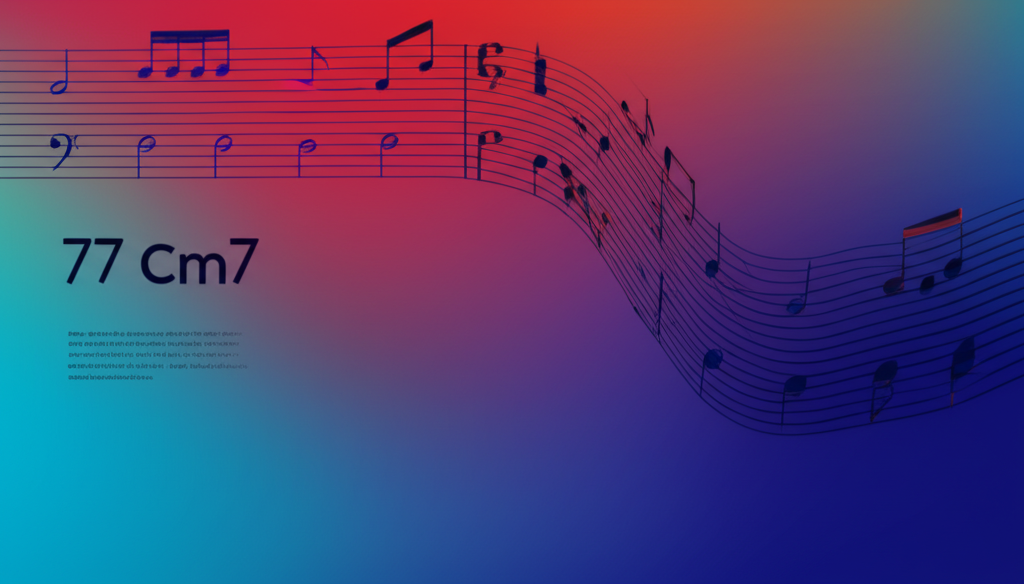Summary:
The minor seventh chord is a four-note chord built from a minor triad with an added minor seventh. Its sound is often described as smooth, melancholic, or sophisticated, creating a contemplative atmosphere that is less tense than a dominant seventh chord. This versatility makes it a cornerstone of jazz, R&B, soul, and contemporary pop music.
Keywords:
minor seventh chord, m7, chord theory, jazz harmony, modal harmony, ii-V-I progression, music theory
Introduction:
Step into the world of sophisticated harmony, and you'll quickly meet the minor seventh chord. It occupies a unique sonic space, blending the moody quality of a minor triad with the colorful extension of a seventh. It doesn't demand resolution like a dominant chord, nor is it as bright as a major chord. Instead, it provides a stable, yet emotionally rich, foundation that has defined the sound of entire genres.
Definition and Construction:
A minor seventh chord (abbreviated as m7, or -7) is built with four notes. The formula, based on the major scale of the root, is: Root (1), Minor Third (b3), Perfect Fifth (5), and Minor Seventh (b7).
For example, a C minor seventh chord (Cm7) consists of the notes C (Root), Eb (a minor third above C), G (a perfect fifth above C), and Bb (a minor seventh above C). You can also think of it as stacking intervals: a minor third (C-Eb), followed by a major third (Eb-G), followed by another minor third (G-Bb).
Examples:
Common Minor Seventh Chords:
Here are four common minor seventh chords, displayed with standard notation and chord symbols. Notice how each one is built using the same R-b3-5-b7 formula.

The Minor Seventh in a ii-V-I Progression:
The most common function for a minor seventh chord is as the 'ii' chord in a major key. The ii-V-I progression is the backbone of jazz and popular music. In the key of C Major, the progression is Dm7 (ii) - G7 (V) - Cmaj7 (I). The Dm7 sets up the tension of the G7, which then resolves satisfyingly to the Cmaj7.

Practical Applications:
Beyond the ii-V-I, minor seventh chords are harmonic workhorses. In modal jazz, a minor seventh chord can serve as the tonic or home base, establishing a key center without the strong pull of a traditional major/minor key. They are also central to R&B, neo-soul, and funk, where grooves often cycle between two or three chords, with minor sevenths providing a warm, lush, and rhythmically compelling backdrop.
Historical Figures:
Miles Davis revolutionized jazz by using minor seventh chords as stable harmonic centers in modal pieces like "So What." The famous "So What" voicing (three perfect fourths topped by a major third) is built from a Dm7 chord and became an iconic sound. Herbie Hancock pushed the chord's application further in funk and fusion, using its ambiguity to create sophisticated and danceable vamps. In the 1990s, artists like D'Angelo and Erykah Badu built the foundations of neo-soul on the rich, layered textures of minor seventh (and ninth) chords, often played on Fender Rhodes electric pianos.
Fun Facts:
The minor seventh chord has a fascinating relationship with the major sixth chord. A C Major 6th chord (C-E-G-A) contains the exact same notes as an A minor 7th chord (A-C-E-G), just in a different inversion. This allows for clever substitutions in arranging and improvisation. The m7 chord is also the natural tonic chord of the Dorian mode. Because Dorian mode has a minor seventh instead of a leading tone, the tonic m7 chord feels settled and "cool" rather than tense and unresolved.
Conclusions:
The minor seventh chord is a testament to the power of harmony. By adding one note—the minor seventh—to a simple triad, a world of emotional depth and sophistication opens up. Its ability to be both a stepping stone in a progression and a destination in itself makes it an indispensable tool for any musician. From the smokey clubs of the jazz age to the intricate productions of today, the m7 remains the undisputed sound of cool. How will you use its unique character in your own music?
References:
Levine, M. (1995). The Jazz Theory Book. Sher Music Co.
Russell, G. (2001). Lydian Chromatic Concept of Tonal Organization. Concept Publishing.
Dobbins, B. (1994). Jazz Arranging and Composing: A Linear Approach. Advance Music.
